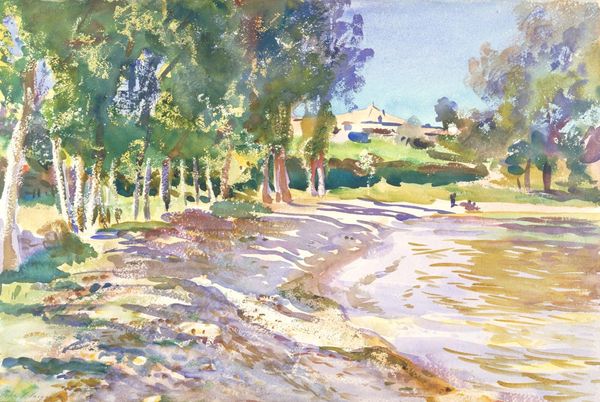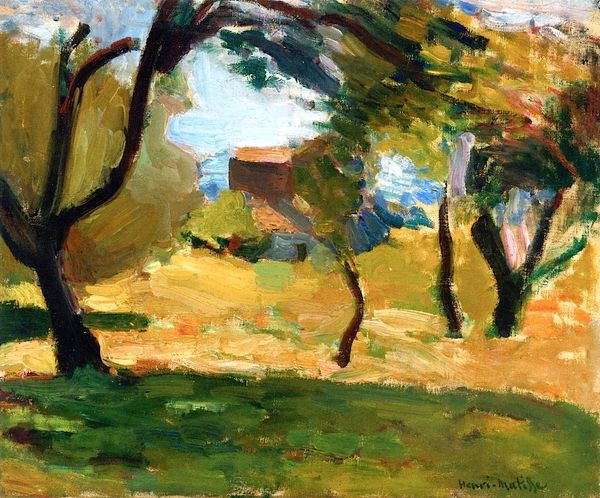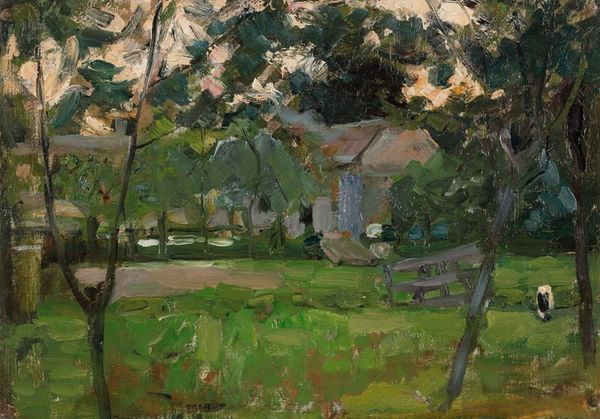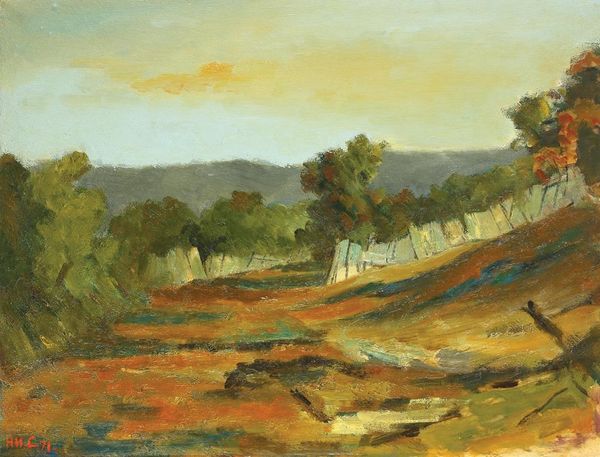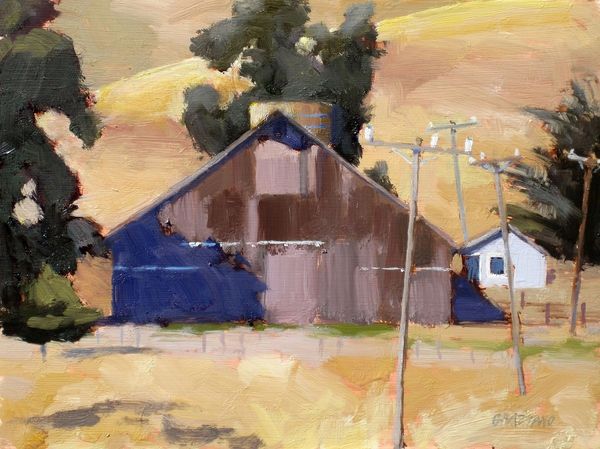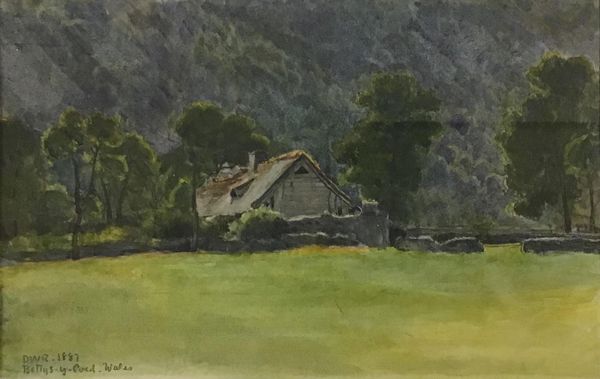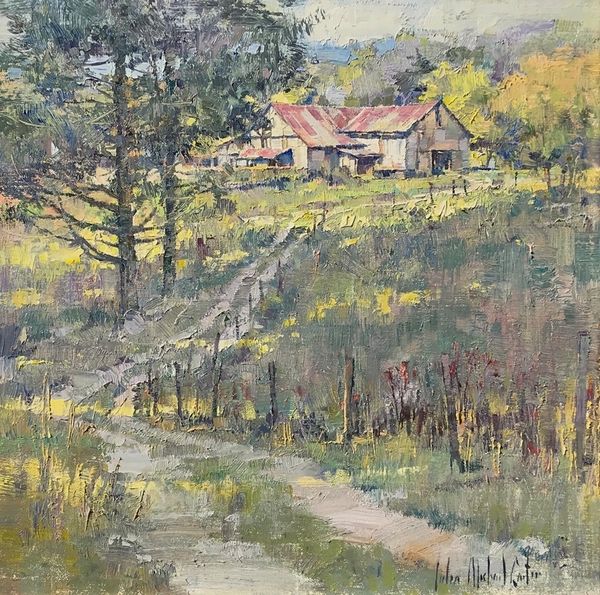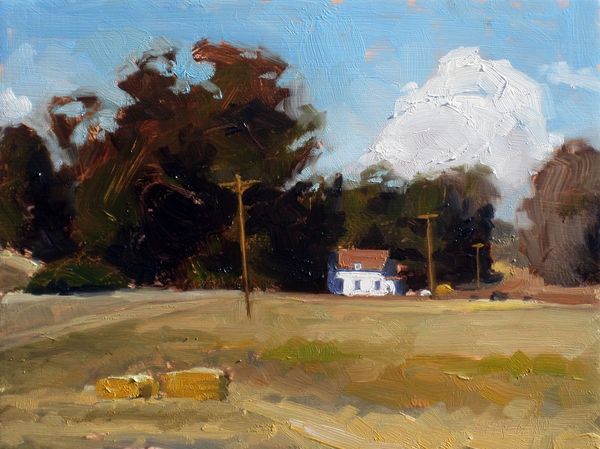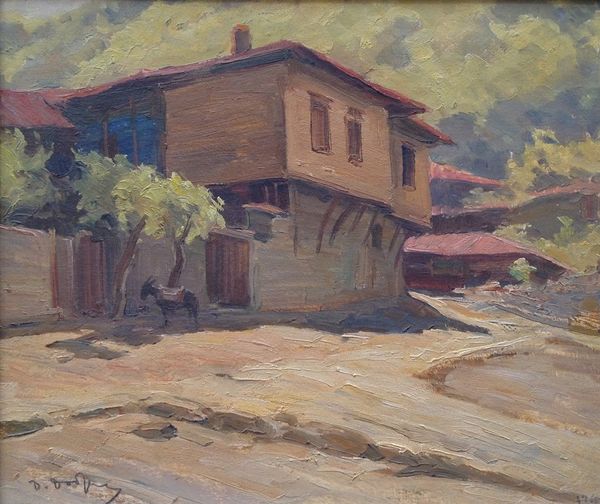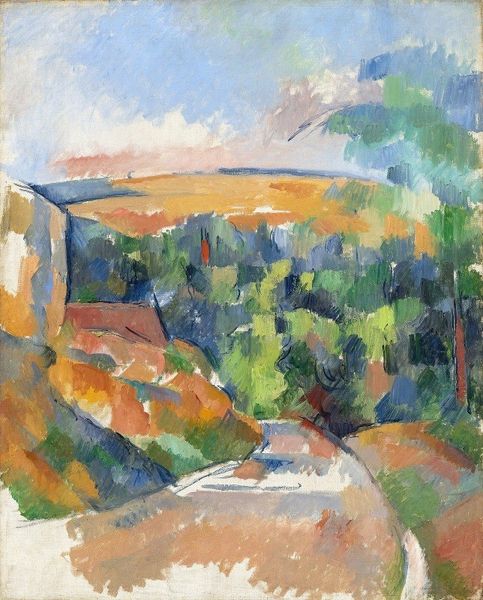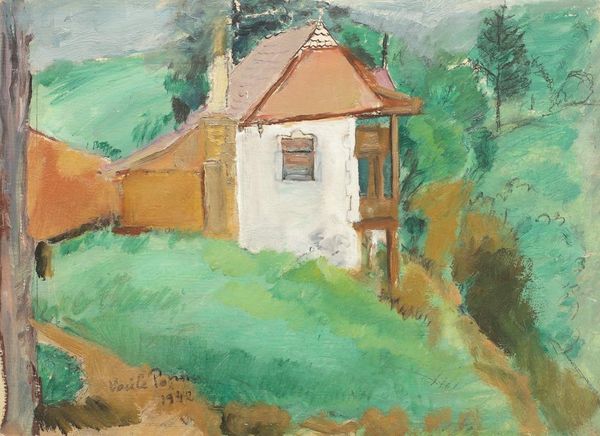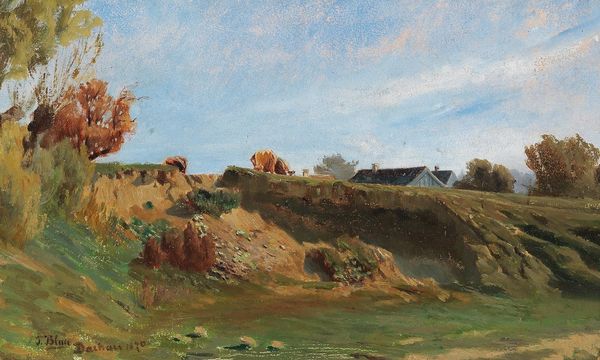
painting, oil-paint
#
painting
#
oil-paint
#
landscape
#
oil painting
#
genre-painting
#
regionalism
#
realism
Copyright: Dobri Dobrev,Fair Use
Curator: Here we have Dobri Dobrev's oil painting "Memory of Biala Village," created in 1941. Editor: It has such a serene quality. The dappled sunlight, the lone figure by the building...it evokes a feeling of quiet rural life. A place I long to know the smells of the forest there and feel that cool air in my face! Curator: It's interesting you pick up on that serenity. Dobrev painted this during World War II, a period marked by intense violence and upheaval. Perhaps this is an appeal to a past where a simple life still existed, before conflict radically disrupted Eastern Europe. We have to acknowledge that during this period, rural villages were not simple paradises. Editor: Yes, I understand that historical context is complex, and romanticizing is always problematic. I'm more taken by the building; it appears modest, but somehow symbolically important. It’s a clear attempt by humanity to tame this small bit of land on the slope of the hill! What cultural weight does such a basic structure hold in Bulgarian rural communities? Curator: You’re right to key in on the cultural value, of course. We could talk at length about Regionalism, where Bulgarian artists specifically tried to picture rural scenes. Dobrev and others are attempting to picture idealized notions of what the common person looks like and their home and work environments, at the margins of a fast modernizing culture. It’s an exercise in nation-building as much as a record of reality. Editor: Do you mean an artistic program designed to reinforce traditional gender roles and suppress diversity of cultural experiences within a region? How might the seemingly innocuous images obscure very harmful hierarchies of dominance and suppression, with devastating impacts for the generations subjected to it? Curator: Exactly. Art such as this, like any cultural expression, does the complex work of both reflecting and shaping society. Seeing the imagery, especially in contrast to what’s known of life during this period, illuminates those tensions. But thanks to your impressions, I’ll also think differently about the small-building symbols in relation to domestic culture going forward! Editor: A pleasure to join forces with your art history perspective again.
Comments
No comments
Be the first to comment and join the conversation on the ultimate creative platform.
